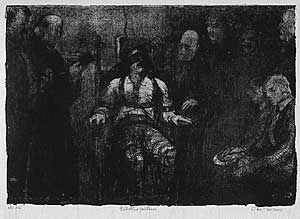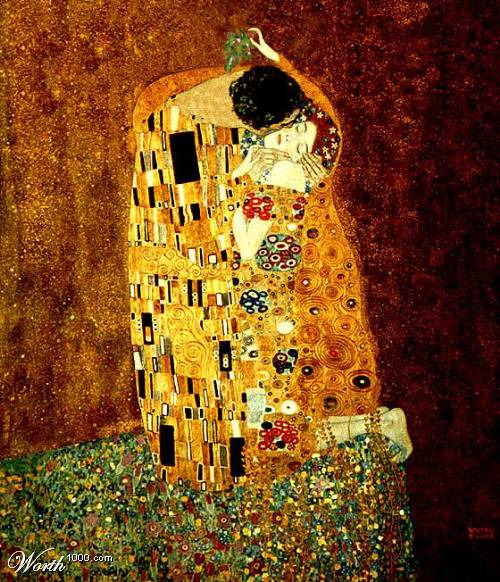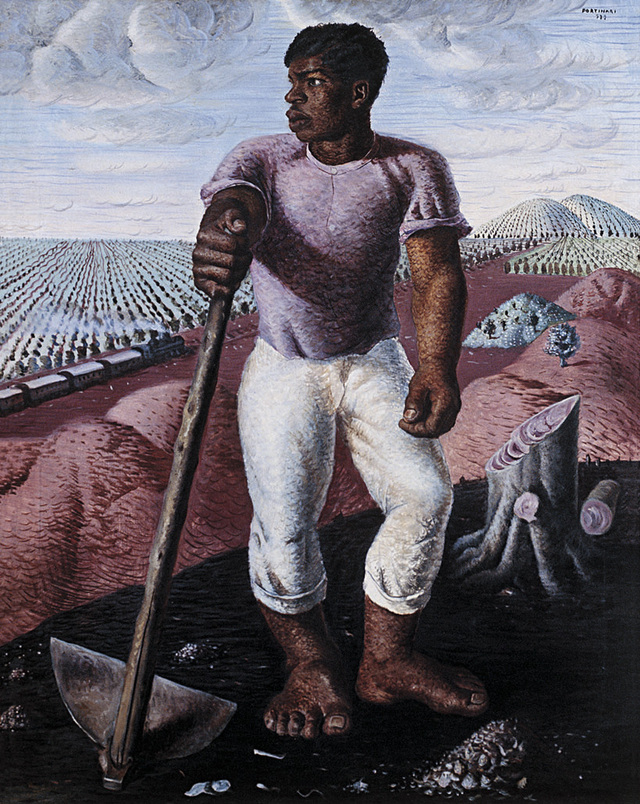Category: The Arts
Rambo Inflation
Number of people killed per minute in the Rambo series.
- Rambo: First Blood (1982): 0.01
- Rambo: First Blood Part II (1985): 0.72
- Rambo III (1988): 1.30
- Rambo IV (2008): 2.59
Hat tip to Peter Gordon.
Assorted links
1. A new blog on movie box office
2. A video of Caroline Hoxby, on charter schools
3. Randall Collins on suicide bombers
What is the right rate of capital gains taxation for art?
Sens. Pete Domenici (R., N.M.) and Charles Schumer (D., N.Y.) have been complaining for the past few years that the capital-gains tax rate of 28% for the sale of art and other collectibles, compared with only 15% for the sale of real estate and securities, unfairly puts art collectors at a disadvantage.
Here is the story. Here are some fallacious views:
Reducing capital-gains taxes on art to the same 15% as real estate and securities makes sense only if one believes that art is just one more and equally important investment realm. "The government is interested in encouraging people to invest in businesses and the housing market and other areas of risk-taking that stimulate job growth and generate tax revenues, and art doesn’t really do that," said Joseph Cordes…
That view was seconded by Leonard Burman, director of the Tax Policy Center of the Urban Institute, who noted that lowering the tax on art sales could result in "shifting into art and collectibles money that should go to more productive things, which would be taxed as ordinary income. To some extent, people would do that." As an example of more productive use of capital, he suggested investing in a factory or apartment house.
That’s the well-known Junker Fallacy. Buying art shifts money from one set of hands to another and it doesn’t discourage investment in factories or elsewhere. (And if it did, investing in houses would involve the same problem, I might add.) The recipient of the money, the art seller, can invest the money just as well as the spender might have. Or in other words, the transfer of the arts doesn’t consume much in the way of real resources. Admittedly there is a second-order effect: higher prices diverts more labor energy into the arts, although for Old Masters this effect is very small. Or you might cite shipping and transfer costs for the art, noting that on that logic we should tax shopping carts at higher rates as well.
There is a good argument for the higher tax rate on art, namely that art yields otherwise non-taxable pleasures — the pleasure of hanging it on your wall — unlike say holding Chrysler stock. Or you might think taxing art is another way to hike the tax burden on the rich. But the cited argument just doesn’t fly.
Thanks to Donn Zaretsky for the pointer.
Jesus Corpos Aliberto
Jesus Corpos, from Ameyaltepec, is a local legend. The story was that he went insane and was holed up in a hotel somewhere in Mexico City, painting brilliant amates, and otherwise sitting in a room talking to himself for the last twenty years. Supposedly he spent each day filling in notebooks with zeros to represent the millions he could have earned from selling his amates. But the people who related those details also told me that crocodiles inhabited the (desert-like) region not long ago, a rabbit lives on the moon, and most of the region’s animals are also sentient gods.
About a week ago, I heard word of Jesus Corpos. An amate merchant from the distant San Pablito (state of Puebla) had told Marcial Camilo that he had delivered some paper to Corpos in Mexico City. Hotel Buenos Aires.
I took a cab to this dingy locale and pushed my way past the locals congregating at the entrance and eating blue corn tortillas. It turns out that Corpos was there, living in a small closet with no light and room for no more than a bed; the stench was overpowering. The hotel owner was putting him up to help out. Upon request, Corpos stepped out of the room with a large roll of amates; from the sight of it the roll had not been opened for five to ten years. He was polite and soft-spoken.
They were in fact remarkable works, but I was unable to meet Corpos’s asking price of 7 million pesos per amate (about $700,000). He told me to return when I had the money. I thanked him profusely and left.
Artists who died in 2007
The most frequently pirated material of 2007
That is one way to discover what is hot. On the other hand, the most frequently pirated movie of 2007 was Resident Evil: Extinction, with Milla Jovovich, so perhaps we do not have a representative sample of consumers here.
On the Uses of Mistletoe
Stolen
It’s one of my favorites, let’s hope they give it back. In the meantime, Merry Christmas everybody!
Evil, ticket-gulping bots?
What high tech wonder-tools does RMG use to defeat Ticketmaster’s captchas, the annoying jumble of characters used to prove your humanity? Is it Optical Character Recognition? Something even more futuristic, maybe web 3.0-ish? Nah. Cipriano Garibay, president of RMG Technologies, boasts: "We pay guys in India $2 an hour to type the answers."
Here is the full story of why concert events must move more and more toward market-clearing prices. Thanks to Aaron Steinberg for the pointer.
The most underrated and overrated cultural events of the year
From Prospect (UK), here is a long list, my picks were:
Overrated
Hollywood movies. US ticket sales recovered this year, but to what end? This was a year for microculture, such as Facebook, Twitter and YouTube. The bigger visual productions of the year won’t much stand the test of time. On the bright side, television drama continues to rise in quality.Underrated
The iPhone. The world really did change on 29th June 2007. We now have handheld personal computers and personal entertainment centres, yet they are no larger than a thin pack of cards. And no, I’m not a techie, a gadget freak or an Apple lover. The device itself is beautiful as well.
Going meta on you again, the most frequently cited overrated event was the movie version of Atonement, then the new Philip Roth book (the latter received one pick for underrated as well). Receiving one or more underrated picks were (I think) the new Hugh Brogan book on Tocqueville (which is excellent), the new Adam Thirlwell novel (no US edition yet), and Nicola Barker’s Darkman.
The culture that is French, a continuing series
Are these consistent or contradictory points of view?
What those foreigners are missing is that French culture is surprisingly lively. Its movies are getting more imaginative and accessible. Just look at the Taxi films of Luc Besson and Gérard Krawczyk, a rollicking series of Hong Kong-style action comedies; or at such intelligent yet crowd-pleasing works as Cédric Klapisch’s L’Auberge Espagnole and Jacques Audiard’s The Beat That My Heart Skipped, both hits on the foreign art-house circuit. French novelists are focusing increasingly on the here and now: one of the big books of this year’s literary rentrée, Yasmina Reza’s L’Aube le Soir ou la Nuit (Dawn Dusk or Night) is about Sarkozy’s recent electoral campaign. Another standout, Olivier Adam’s A l’Abri de Rien (In the Shelter of Nothing), concerns immigrants at the notorious Sangatte refugee camp. France’s Japan-influenced bandes dessinées (comic-strip) artists have made their country a leader in one of literature’s hottest genres: the graphic novel. Singers like Camille, Benjamin Biolay and Vincent Delerm have revived the chanson. Hip-hop artists like Senegal-born MC Solaar, Cyprus-born Diam’s and Abd al Malik, a son of Congolese immigrants, have taken the verlan of the streets and turned it into a sharper, more poetic version of American rap.
Those would not have been my exact picks but there you go. (I was offended by L’Auberge Espagnole; could not one of them have had an internet start-up? I also found myself longing for organized religion.) Alternatively:
In a September poll of 1,310 Americans for Le Figaro magazine, only 20% considered culture to be a domain in which France excels, far behind cuisine.
Or:
Only a handful of the season’s new novels will find a publisher outside France. Fewer than a dozen make it to the U.S. in a typical year, while about 30% of all fiction sold in France is translated from English.
Most of all, the French specialize in having good taste in culture, which is a form of interior mental production. A world music buy on a French label is virtually a sure thing. The question is how good your culture can get, these days, without exporting much. Here is the full and interesting story.
Thanks to David Zetland for the pointer.
Electrocution

Successive versions of this George Bellows lithograph remove the witnesses one by one until only the executioner and his victim remain.
Meta-recommendations
I’ve spent lots of time scouring this year’s "Best of" lists, and I thought I should pass along what I have learned. These are not my recommendations (though I often approve), these are what I have gleaned from the recommendations of media critics. They are my judgment of the most common selections on the "Best of" lists, noting that I did not check the lists from publications I do not enjoy and thus there is an implicit filter being applied.
So here is my aggregation:
1. Non-fiction book: Alex Ross, The Rest is Noise.
2. Fiction book: Tree of Smoke, or The Savage Detectives.
2. Miscellaneous book: Letters of Ted Hughes. Everyone loves this, I haven’t read it yet.
3. Movie: No Country for Old Men. The Diving Bell and the Butterfly gets lots of picks, given that it is playing in only two cities.
4. Classical CD: Lorraine Hunt Lieberson Sings Peter Lieberson, "Neruda Songs." Read the excellent Ed Uyeshima review on Amazon, it is first.
5. Popular music: LCD Soundsystem, Sound of Silver, or possibly Neon Bible, by Arcade Fire.
I still can’t figure out the consensus jazz CD of the year. Any help?
I might add that the non-meta me basically approves of this list, with two caveats. First, the Lieberson CD, while quite good, in part received so many mentions because the singer, Lorraine Hunt Lieberson, met a young and tragic death this last year. It was her husband who composed these songs for her. Second, I don’t myself have clear picks for popular music. I do a lot of my popular music buying in December, when the "Best of" lists come out. I did put on LCD Soundsystem this morning but was bored by it on first listening.
The Golden Compass
It lacks direction.
Unusual thoughts about contemporary art
Contemporary art is highly individualistic. It is about freedom of
expression, the chance to make one’s mark and to speak with a
distinctive voice – all characteristics of the right, rather than the
left. Contemporary artists are entrepreneurs in every sense of the
word. The Brit Artists of the 1990s have turned themselves into brands,
selling a luxury commodity to a group of discerning purchasers. The Damian Hirst skull,
retailing at £50 million, could not remotely be described as a leftwing
statement, except in the sense that, like many projects of the left, it
is massively over-priced and a colossal waste of money (only kidding
Damian).
Here is more, hat tip to www.bookforum.com.

